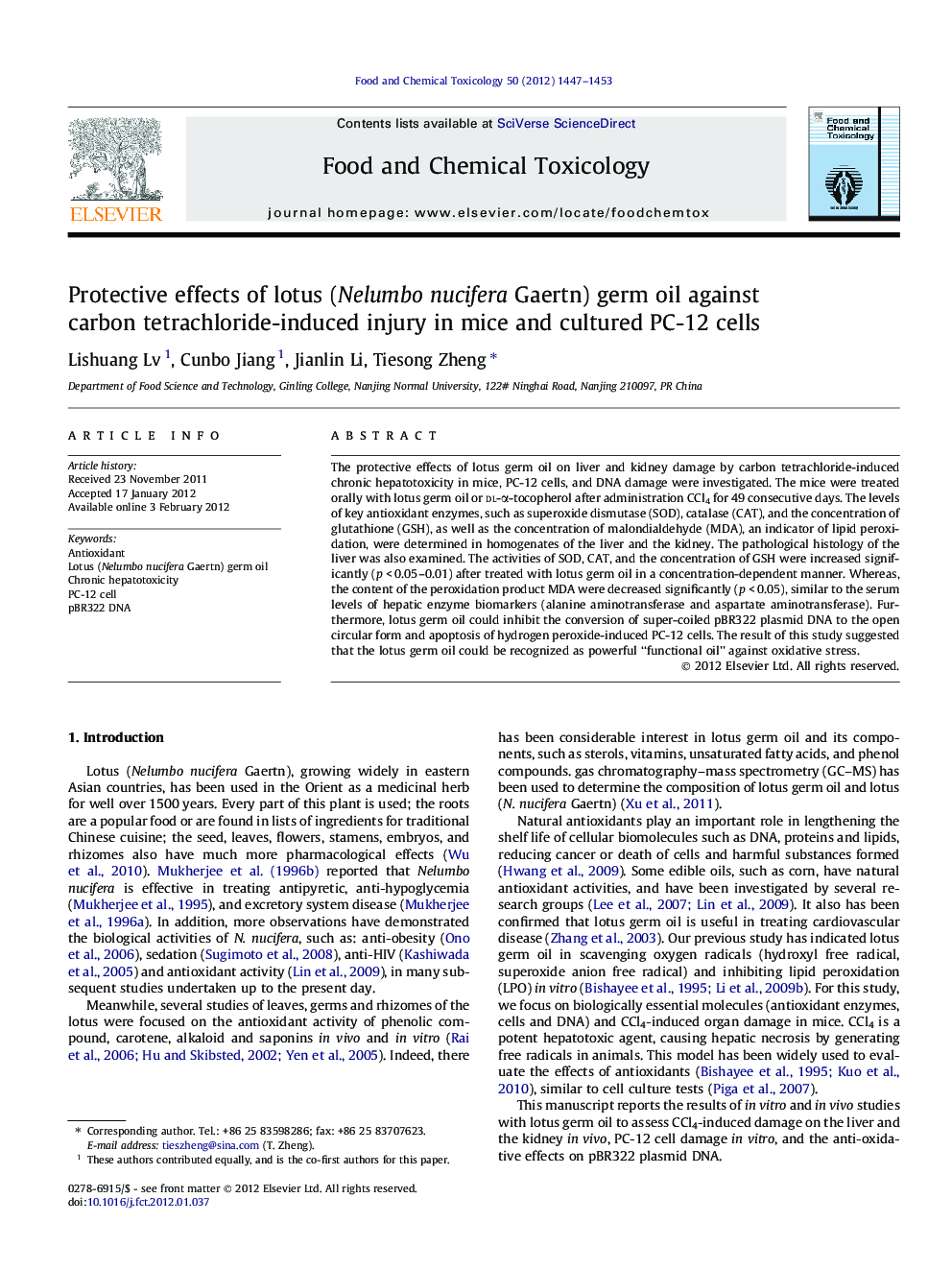| Article ID | Journal | Published Year | Pages | File Type |
|---|---|---|---|---|
| 5852461 | Food and Chemical Toxicology | 2012 | 7 Pages |
The protective effects of lotus germ oil on liver and kidney damage by carbon tetrachloride-induced chronic hepatotoxicity in mice, PC-12 cells, and DNA damage were investigated. The mice were treated orally with lotus germ oil or dl-α-tocopherol after administration CCl4 for 49 consecutive days. The levels of key antioxidant enzymes, such as superoxide dismutase (SOD), catalase (CAT), and the concentration of glutathione (GSH), as well as the concentration of malondialdehyde (MDA), an indicator of lipid peroxidation, were determined in homogenates of the liver and the kidney. The pathological histology of the liver was also examined. The activities of SOD, CAT, and the concentration of GSH were increased significantly (p < 0.05-0.01) after treated with lotus germ oil in a concentration-dependent manner. Whereas, the content of the peroxidation product MDA were decreased significantly (p < 0.05), similar to the serum levels of hepatic enzyme biomarkers (alanine aminotransferase and aspartate aminotransferase). Furthermore, lotus germ oil could inhibit the conversion of super-coiled pBR322 plasmid DNA to the open circular form and apoptosis of hydrogen peroxide-induced PC-12 cells. The result of this study suggested that the lotus germ oil could be recognized as powerful “functional oil” against oxidative stress.
⺠Lotus germ oil could protect on liver and kidney damage by CCl4-induced in mice. ⺠Lotus germ oil could inhibit the conversion of super-coiled pBR322 plasmid DNA. ⺠Lotus germ oil could inhibit apoptosis of hydrogen peroxide-induced PC-12 cells.
